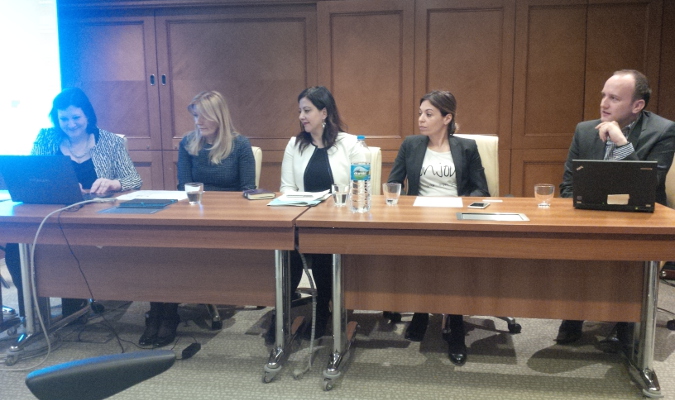Putting women in the forefront of disaster response in Europe
Date:

As natural disasters are affecting Europe and Central Asia, it is essential to recognize women as dynamic agents in disaster risk reduction (DRR), concluded a panel organized by UN Women Europe and Central Asia Regional Office at the European Forum for Disaster Risk Reduction which ended on 28 March.
The panel also underlined the critical need of increasing political will and financial commitments to carry out gender-responsive risk reduction, preparedness and recovery to ensure that the impacts of disasters on women are clearly measured and policies to address them are put into place.
UN Women Europe and Central Asia regional office organized this well-attended panel on gender and disaster risk reduction (DRR) which provided UN Women and its partners from the United Nations Office for Disaster Risk Reduction (UNISDR), the Serbian government and Public Health England, a platform to underline the importance of understanding the inequality of risk for women and girls in disasters, and to advocate for greater roles for women as agents of change in disaster planning and response.
UN Women ECA RO Deputy Director, Alia El Yassir welcomed the panelists and close to fifty participants from the government, civil society and academia by providing the context for the focus on gender and DRR. “Women and girls make up the vast majority of those who die in natural disasters, yet too often they are left out of disaster prevention and response planning,” she said in her remarks.
UNISDR Regional Office for Europe Head, Paola Albrito underlined the importance of including women and gender issues in DRR by referring to the 2015 Sendai Framework for Disaster Risk Reduction 2015-2030, adopted by UN member states in Japan, in March 2015. It has set an ambitious agenda for states to work on DRR but also calls on governments to engage women in disaster reduction planning and implementation.
The risk for women in disasters is generally higher than it is for men. Often rooted in existing gender inequalities, disaster can cause higher mortality, increased rates of gender-based or sexual violence, unequal access to assistance and services, loss of economic opportunities and inadequate calculations of the economic cost of disasters on women working in the non-formal sector.
At the same time, “Sendai has made the shift from considering stakeholders as victims to recognizing them as agents of change,” Albrito said.
On the discussion panel, the Government of Serbia’s Public Investment and Management Deputy Director, Sandra Nedeljkovic provided examples of good practice where the country integrated women and responded to their needs during the 2014 floods. “(And even more now) we need data, gender in risk assessments and reduction planning, and more attention to gender in the whole process,” said Nedeljkovic.
A number of other specialists joined the panel. This included Kevin Blanchard from Public Health England and Director of DRR Dynamics who provided clear examples of where gaps remain in the integration of gender in DRR. He described an example of how the inequality of risk for women is also a European problem as women’s mortality was much higher than men’s in France’s 2003 heatwave that reportedly killed at least 35,000 people.
Based on the opportunities and gaps for women and girl integration in DRR, UN Women’s Chief, Crisis Prevention, Preparedness and Response, Hiba Qasas concluded the presentations on how UN Women’s Gender Inequality of Risk (GIR) programme* can help advance DRR effectiveness and reduce women’s mortality in disasters.
The panel’s conclusions fed into the outcome document which noted that as a contribution to the Global Platform for Disaster Risk Reduction being held in Cancun on 22-26 May, participants of European Forum for Disaster Risk Reduction “reaffirm that women and girls are disproportionally impacted by disaster and that women play a role in advancing risk reduction as active agents of change.”
* GIR is a joint initiative of UN Women, IFRC and UNISDR. It aims to address lack of data and gender analysis, women’s participation and leadership in DRR, and financial and political investment, to carry out gender-specific risk reduction, preparedness and recovery measures.